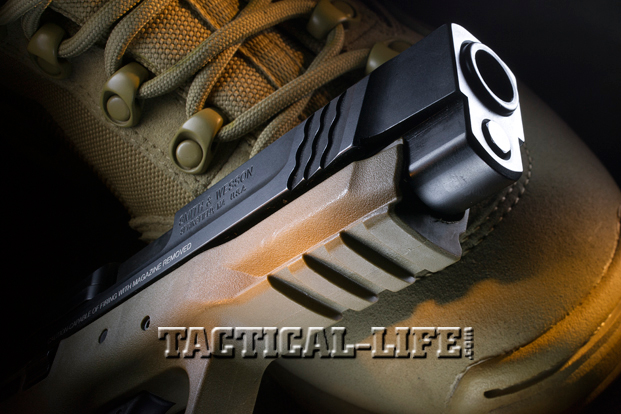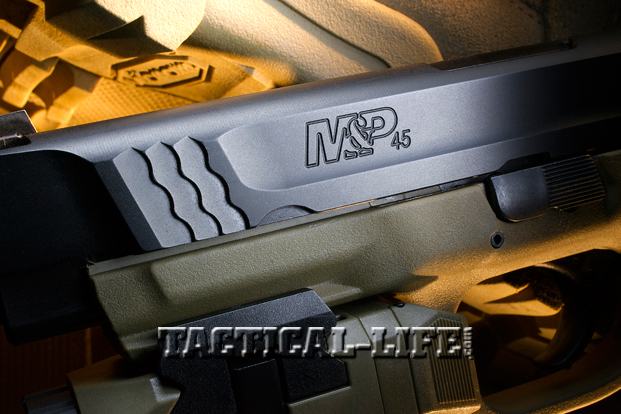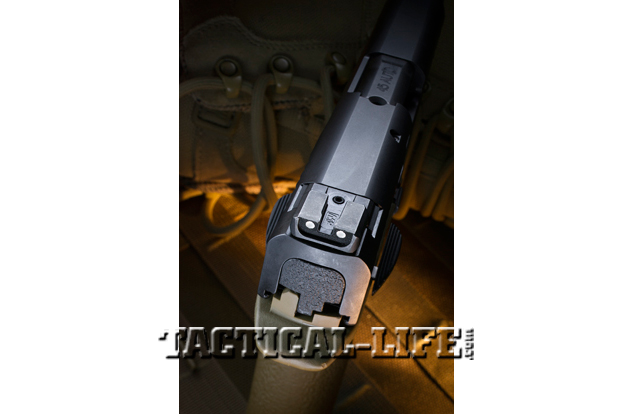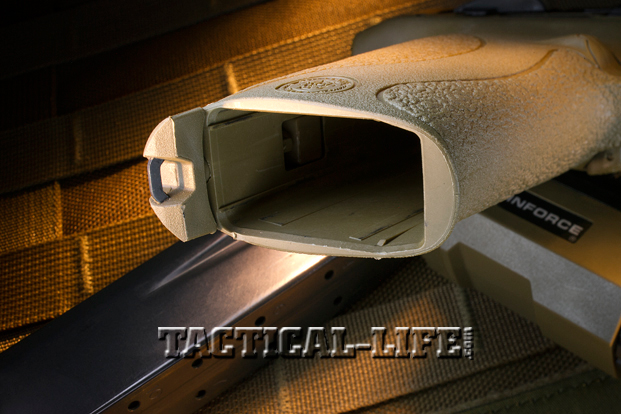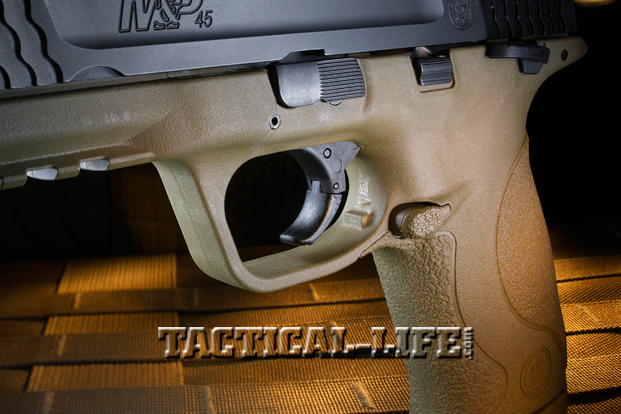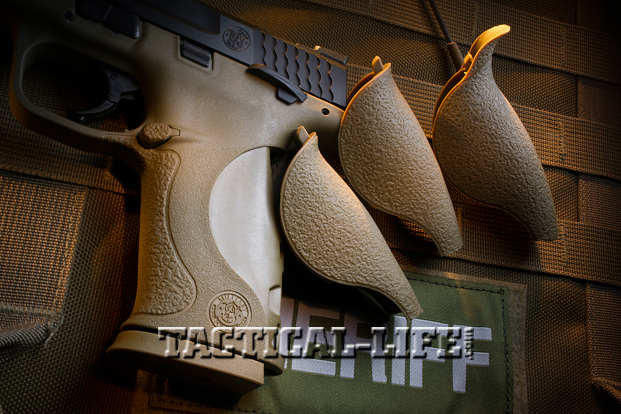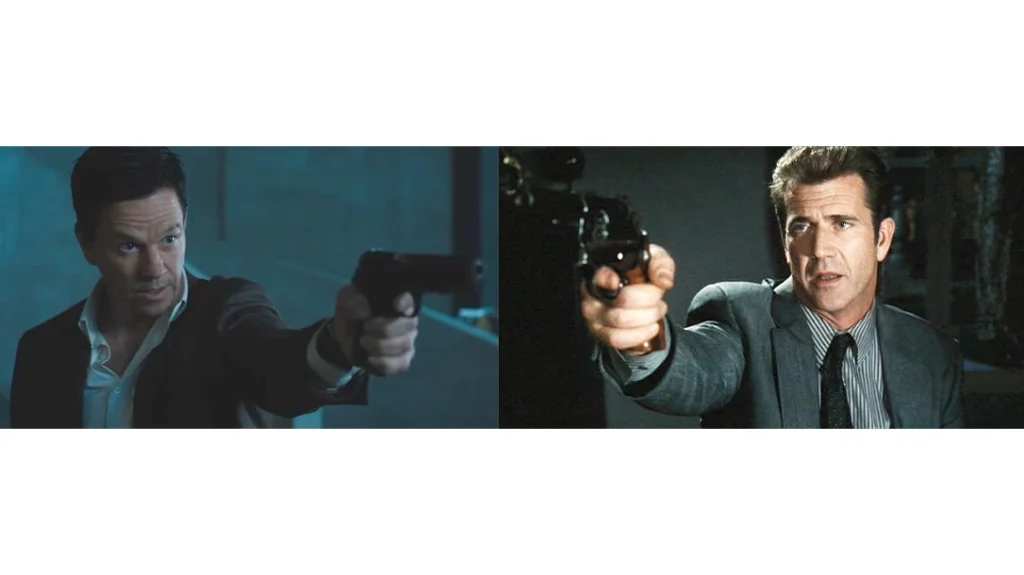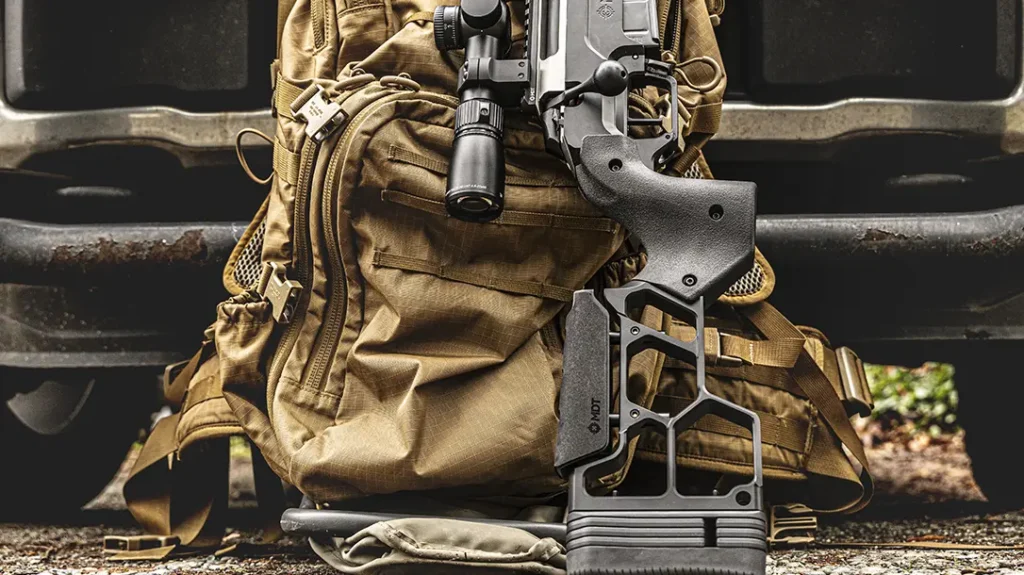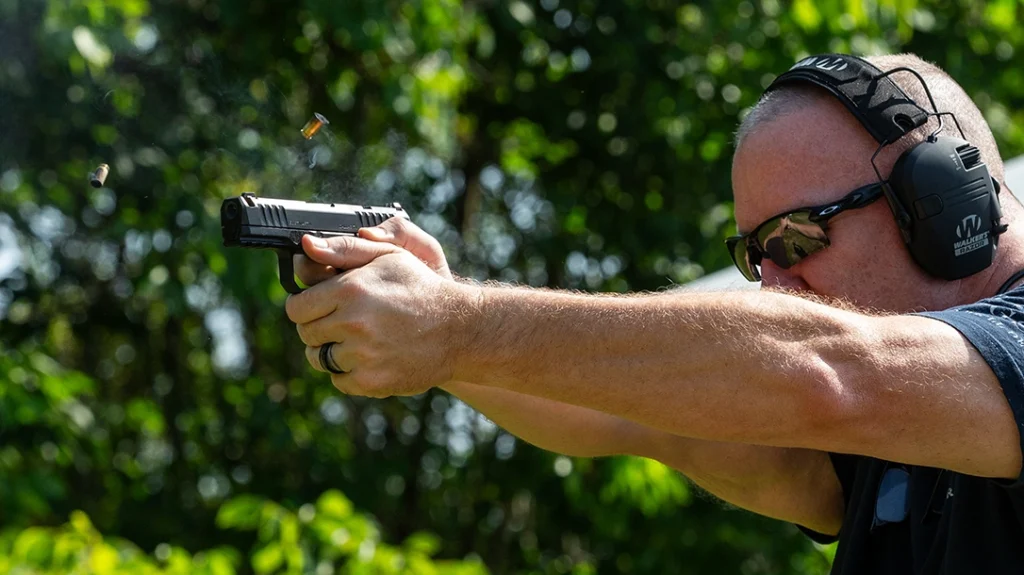Designed with law enforcement users in mind, Smith & Wesson launched its M&P autopistol series in late 2005 and was quickly embraced by that community. I was fortunate enough to be one of the media group invited to S&W to see the rollout of the M&P40. In August 2007, I got the first of the M&P45 pistols I’ve used over the years. Recently, I was asked to take a look at current-production M&P45s, and S&W was kind enough to send me a standard 4.5-inch-barreled model with a Dark Earth Brown frame and a black slide. How does it differ, and how has the line progressed?
Gun Details
The new M&P line began in 2005 with the M&P40. The .40 S&W cartridge was the choice of police nationwide at the time, with second place likely going to the 9mm and a smaller group with a smattering of .45 ACP and .357 SIG pistols. The standard M&P semi-autos (the .40 was followed by the 9mm) have barrels of 4.25 inches, like the Colt Commander. The original M&P45 was a 4.5-inch-barreled gun. It was quickly followed by a mid-size, 4-inch-barreled pistol with a standard frame, and the M&P45c “compact,” which has a 4-inch barrel and slide mated to a shorter frame.
Advertisement — Continue Reading Below
There are scalloped cocking serrations at the front and rear of the slide of the standard M&P45. The front of the slide is also beveled, so the slide nose is skinnier than the flats of the slide, making it easier to reholster. The magazine catch is user-reversible, and instructions are provided in the manual. There is a “sear deactivation lever” in the front of the sear block. Visible with the slide locked open—ensuring the gun can’t fire at that moment—it can be hooked and pushed down, putting the striker at rest and allowing for disassembly without pulling the trigger.
The barrels and slides are made from through-hardened stainless steel. Smith & Wesson then uses a process similar to ferritic-nitrocarburizing to make the barrels and slides more durable and corrosion resistant. The current M&P slides are no longer marked “STAINLESS” on the left side under the ejection port. The current-issue guns are blank there. Smith & Wesson’s director of marketing communications told me that the slides are still fabricated of stainless steel, but the markings are no longer applied. The exterior of the dust cover has an accessory rail for adding a weapon-mounted light or laser.
The standard M&P45 ships with a pair of 10-round magazines and three interchangeable backstraps/palmswells. The medium size is on the gun as it arrives. I immediately replaced it with the small size; the more hand I can get around a .45 ACP, the more I like it. This backstrap system hasn’t changed since 2007. What has changed, in addition to the lack of the “stainless” slide marking, is the rear sight. Instead of the “ski slope,” low-mount, non-snag arrangement, there’s now a flat face cut into the front part of the slope.
Advertisement — Continue Reading Below
As police lieutenant Chuck Haggard explained, “The place you don’t want it to snag is on the way out. It’s nice to have a snag point on the front of the rear sight in case you need to rack the slide one-handed.” How likely are you to need that? Who knows? It doesn’t hurt to have the option, and it doesn’t hurt the sight picture at all.
As usual for M&Ps, the available thumb safety levers and the slide stop levers appear on both sides of the frame. The takedown lever is only on the left side. It’s of no importance, as disassembly is an administrative matter. The hinged trigger makes weighing the trigger pull dicey. It’s firm with a bit of take-up before reaching the hard point. It’s firm, but not excessive.
Range Time
Advertisement — Continue Reading Below
Before heading to the range, I obtained spare 10- and 14-round magazines from Brownells. The 14-round magazines have polymer “boots” to fill in the space between the floorplate and the bottom of the frame. The boots are black, as are most M&P45 pistols. The 10-round magazines likewise had black floorplates. This didn’t affect the pistol’s functioning in the least.
I used a CrossBreed SuperTuck Deluxe, with its open-bottom design, to carry the M&P45. For a spare magazine pouch, I used a new Comp-Tac design. The attachment to the belt, a clip integral to the pouch, is the same as older versions, and it’s one reason I like to use them.
Taking the M&P45 to the sheriff’s range, I met Corporal Rob Child. A firearms instructor/SWAT officer since the mid-1990s, Rob has lots of experience. Like me, he carried the S&W 4506-1 for a good part of his career, finally giving it up in late 2003. He was impressed by the “airweight” nature of the M&P45. Unlike our 5-inch-barreled guns, the M&P45 was pleasingly compact with its 4.5-inch barrel, and the gun is thin in spite of its 10+1 capacity.
Advertisement — Continue Reading Below
Corporal Child shot the gun enough to realize he was missing the trigger reset he was used to in the S&W 4506-1 and his current pistol. After a few rounds, it didn’t seem to bother him. “Where was this back when we carried 4506s?” he asked. Now it was my turn. I checked the pistol’s accuracy and velocity using three loads: CorBon 185-grain DPX +P, Federal 230-grain Hydra-Shok HP and Hornady 230-grain TAP ammo. I found no surprises in the performance, and the few stoppages I had were with some Federal Gold Medal Match 185-grain FMJ semi-wadcutters I also had on hand, and then only when I loaded the magazines to full capacity. With everything else, it ran perfectly.
To test the pistol’s handling, I ran it through the Kansas Commission on Peace Officers’ Standards and Training (CPOST) qualification—with some variations. I used the FBI-QIT99 target instead of FBI Q (Kansas uses the whole “milk bottle” area for scoring). The QIT, provided by Law Enforcement Targets, is about two-thirds the length of the “Q” milk bottle. There is a chest box (6.38 inches high by 4.13 inches wide) and a head box (2.88 inches high by 3 inches wide). The CPOST qualification involves work from the holster, from ready, standing-to-kneeling, lateral movement (even in the standard course) and strings from three to five rounds—everything but timed reloads.
I added lateral movement in each stage except the first stage (starting at 1.5 yards, moving back and laterally) and the last stage (25 yards). All three-shot strings were fired as “failure drills”—two rounds in the upper chest and one headshot. The times were easy to make, and the M&P45 ran it well.
Advertisement — Continue Reading Below
If you are looking to carry a .45 ACP and the modern striker-fired pistol is your preference, the Smith & Wesson M&P45 is a great choice. It has some of the best ergonomics around. It’s easy to use, the price is right, it’s more accurate than it needs to be and there is plenty of duty gear available for it.

